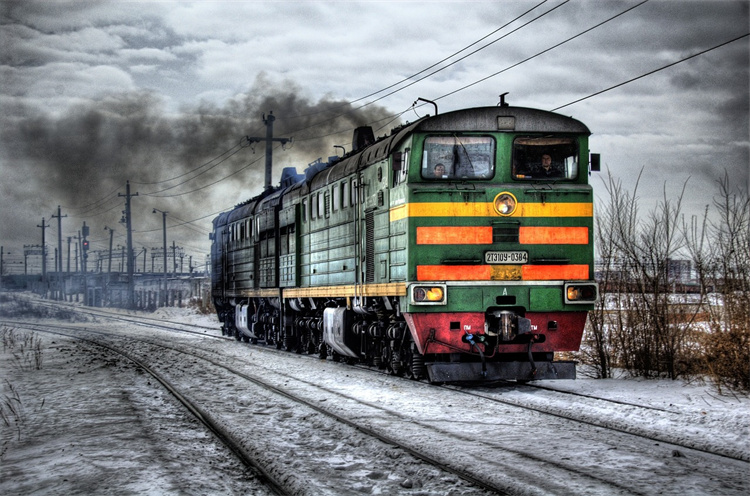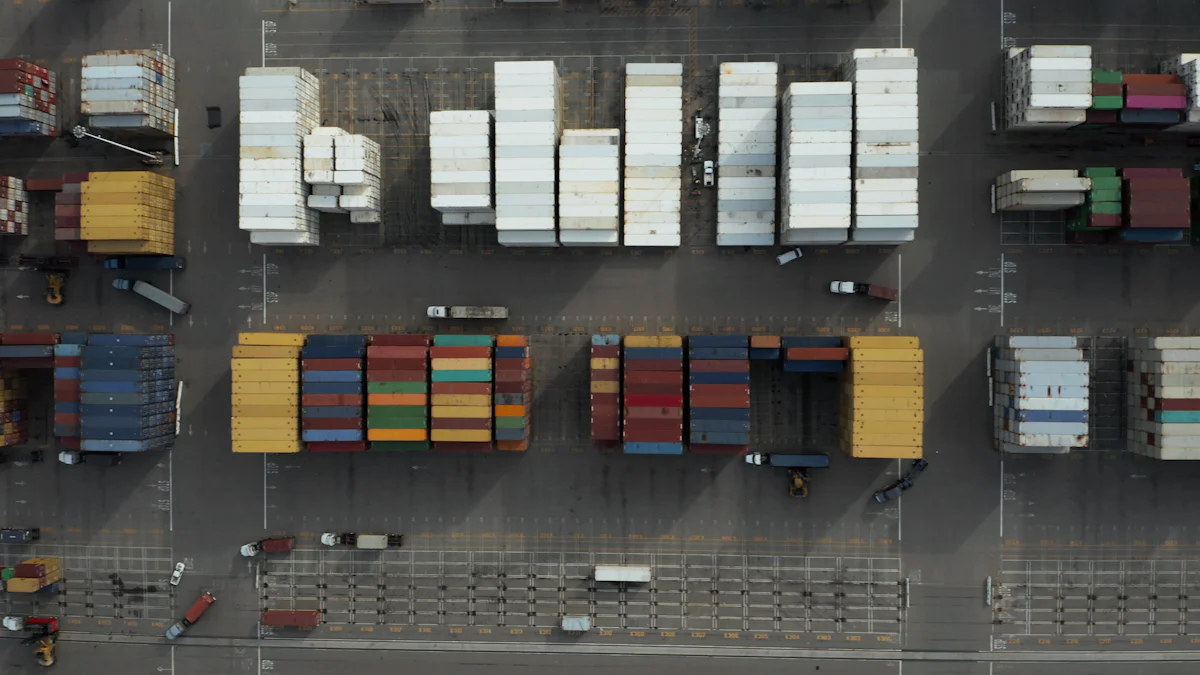2024 Forecast: The Impact of China-Europe Railway on Global Rail Transport

The China-Europe Railway has revolutionized global trade. This railway connects over 120 Chinese cities with 219 European cities. The railway has facilitated a substantial increase in trade volumes between China and Europe. Trade volumes have grown from 4 trillion yuan in 2013 to 7.42 trillion yuan in 2022. The railway has transported over 50,000 types of goods, including machinery, electronics, and automobiles. According to the 2024 forecast, the railway is expected to play an even more significant role in global rail transport. This blog will analyze the impact of the China-Europe Railway in 2024.
Historical Context and Development
Origins of the China-Europe Railway
Initial Conception and Planning
The China-Europe Railway Express began in 2011. This project aimed to create a direct land route between China and Europe. The initial planning involved extensive coordination between multiple countries. The goal was to enhance trade and connectivity across the Eurasian continent.
Key Milestones and Developments
The railway has seen many key milestones since its inception. The first train journeyed from Chongqing to Duisburg in 2011. This marked the beginning of a new era in global trade. By 2016, the number of annual trips surged to 1,702. This figure skyrocketed to over 17,000 by 2023. The railway now connects 120 Chinese cities with 219 European cities. This expansion has significantly boosted trade volumes and economic growth.
Expansion and Modernization
Technological Advancements
Technological advancements have played a crucial role in the railway's success. Modern trains equipped with advanced tracking systems ensure timely deliveries. Automated systems manage logistics efficiently. These technologies have reduced transit times and improved reliability. The railway now offers a faster and safer alternative to maritime routes.
Infrastructure Investments
Infrastructure investments have been vital for the railway's expansion. China and Europe have invested heavily in rail infrastructure. New tracks, stations, and terminals have been constructed. These investments have enhanced the railway's capacity and efficiency. The railway now facilitates the transportation of a diverse range of goods. This includes machinery, electronics, and automobiles.
Economic Impact

Trade and Commerce
Trade Volume and Economic Growth
The China-Europe Railway has significantly boosted trade volumes. Trade volume grew from 4 trillion yuan in 2013 to 7.42 trillion yuan in 2022. This growth highlights the railway's role in facilitating economic integration between China and Europe. The rail service has moved over eight million TEUs so far, showcasing its capacity and efficiency. The 2024 Forecast predicts continued growth, with trade volumes expected to rise by an average of 8% annually.
Key Trade Routes and Hubs
Key trade routes have emerged along the China-Europe Railway. Major hubs include cities like Chongqing, Duisburg, and Warsaw. These hubs serve as critical points for the distribution of goods. The railway connects 120 Chinese cities with 219 European cities, enhancing connectivity. This network supports the efficient movement of machinery, electronics, and automobiles. The 2024 Forecast indicates that these routes will become even more vital for global trade.
Job Creation and Economic Opportunities
Employment in Rail and Related Sectors
The China-Europe Railway has created numerous job opportunities. Employment in rail and related sectors has surged. Workers are needed for train operations, logistics, and infrastructure maintenance. The 2024 Forecast suggests that job creation will continue to rise. This growth will benefit both China and Europe, providing stable employment for many individuals.
Regional Economic Benefits
Regional economies have experienced significant benefits from the railway. Local businesses have gained access to new markets. The increased trade has spurred economic growth in various regions. The 2024 Forecast projects further regional economic benefits. Enhanced connectivity will continue to drive economic development across the Eurasian continent.
Environmental and Social Impact

Environmental Benefits
Reduction in Carbon Emissions
The China-Europe Railway Express offers a greener alternative to traditional shipping methods. Rail transport generates significantly less carbon pollution compared to air or sea transport. In 2021, the railway emitted approximately 6.2 million tonnes of CO2 equivalent. This figure is considerably lower than emissions from other modes of transport. The 2024 Forecast anticipates further reductions in carbon emissions. Enhanced efficiency and technological advancements will contribute to this decline. The railway's eco-friendly nature supports global efforts to combat climate change.
Sustainable Transport Solutions
Sustainable transport solutions are vital for the future of global trade. The China-Europe Railway exemplifies such solutions. Modern trains equipped with advanced tracking systems ensure efficient logistics. Automated systems streamline operations, reducing energy consumption. Infrastructure investments have improved the railway's capacity and reliability. These advancements make the railway a sustainable option for transporting goods. The 2024 Forecast predicts continued innovation in sustainable transport. Emerging technologies will further enhance the railway's environmental benefits.
Social and Cultural Exchange
Connectivity and Mobility
The China-Europe Railway has revolutionized connectivity and mobility across the Eurasian continent. The railway connects over 120 Chinese cities with 219 European cities. This extensive network facilitates the movement of people and goods. Improved connectivity has boosted tourism and retail sectors. Travelers can now explore new destinations with ease. The 2024 Forecast suggests that connectivity will continue to improve. Enhanced mobility will support economic growth and cultural exchange between regions.
Cultural and Social Integration
Cultural and social integration have flourished due to the China-Europe Railway. The railway has bridged gaps between diverse cultures. Increased interaction has fostered mutual understanding and cooperation. Local communities have benefited from exposure to different traditions and customs. The 2024 Forecast indicates that cultural integration will deepen. The railway will continue to serve as a conduit for social exchange. This integration will strengthen ties between China and Europe, promoting harmony and collaboration.
Challenges and Future Prospects
Operational Challenges
Logistical and Technical Issues
The China-Europe Railway faces significant logistical and technical issues. Customs procedures often cause delays. These delays disrupt the supply chain. Transhipment operations add to the complexity. Each transfer increases the risk of damage or loss. Additional costs arise from these complications. Efficient logistics management remains crucial.
Technical issues also pose challenges. The railway spans multiple countries. Each country has different rail gauges. Trains must switch between gauges, causing delays. Advanced tracking systems help but do not eliminate all problems. Maintenance of infrastructure requires constant attention. Any failure can halt operations.
Political and Regulatory Hurdles
Political and regulatory hurdles affect the railway's efficiency. Different countries have varying regulations. Compliance with these regulations takes time and resources. Political tensions can lead to sudden changes in policies. These changes disrupt the smooth flow of goods.
Trade agreements play a role as well. Not all countries have favorable trade agreements. Tariffs and restrictions impact the cost and speed of transport. Negotiating better terms remains a priority. The railway's success depends on stable political relations.
Future Developments and Innovations
Emerging Technologies
Emerging technologies promise to enhance the railway's efficiency. Automated systems streamline logistics. These systems reduce human error. Advanced tracking provides real-time updates. Shippers can monitor their cargo throughout the journey.
Green technologies also play a role. Electric trains reduce carbon emissions. Renewable energy sources power some segments of the railway. These advancements make the railway more sustainable. Future innovations will likely focus on further reducing environmental impact.
Strategic Partnerships and Collaborations
Strategic partnerships boost the railway's potential. Collaborations between countries improve coordination. Joint investments enhance infrastructure. Shared technology and expertise lead to better solutions.
Public-private partnerships offer additional benefits. Private companies bring innovation and efficiency. Governments provide regulatory support and funding. Together, they create a robust and reliable railway network.
The future looks promising for the China-Europe Railway. Overcoming current challenges will pave the way for continued growth. Emerging technologies and strategic partnerships hold the key. The railway will play an even more significant role in global trade.
The China-Europe Railway has transformed global trade and connectivity. The railway's expansion has boosted trade volumes, created jobs, and reduced carbon emissions. Technological advancements and infrastructure investments have enhanced efficiency and reliability. Future developments will likely focus on emerging technologies and strategic partnerships.
Stakeholders should continue investing in infrastructure and technology. Collaboration between countries and private sectors will be crucial. Emphasizing sustainability will ensure long-term benefits. The China-Europe Railway will play a pivotal role in shaping the future of global rail transport.
See Also
Revealing the Latest in Sea Freight Logistics for 2024
Analyzing the Future of Less Than Truckload Freight
Understanding the Influence of Trends on Logistics Risks
